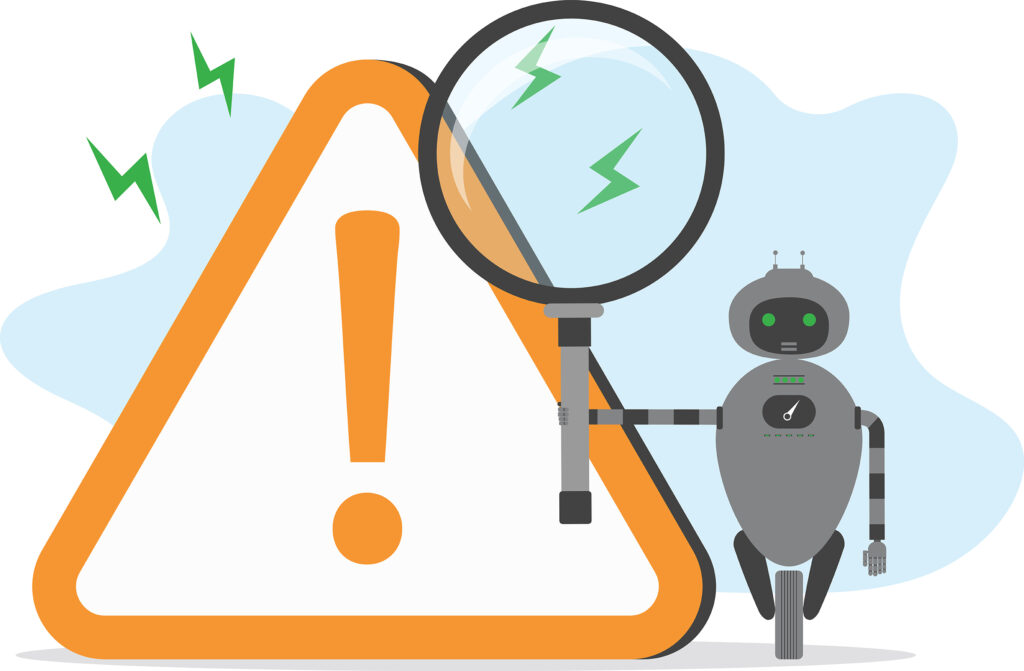Artificial intelligence (AI) is a two-sided coin. While it has revolutionized how we work, communicate, and interact with technology, it has also accelerated the speed and complexity of cyber exploits. As AI-driven attacks increase in scale and impact, experts emphasize the need for businesses to move beyond traditional, human-centric defense strategies.1 By harnessing AI to combat AI, organizations can keep pace with the fast-evolving, pervasive, and automated nature of today’s threats while proactively safeguarding critical operations.
Raising Risk Profiles
The simple truth: AI lowers the barrier to technology adoption. Just as it empowers organizations to do more with less, AI in the wrong hands can make sophisticated attack methods more accessible to bad actors. From reducing the learning curve to improving the efficacy of exploits, AI is breeding new cyber challenges for businesses to contend with.
- AI-enabled threats: Bad actors use AI, machine learning (ML), and deep learning techniques to enhance their efforts. This can enable adversaries to automate stages of an attack to identify vulnerabilities, evade traditional defenses, and launch highly targeted exploits more effectively.2 As a result, cyberattacks become more sophisticated, harder to detect, and increasingly dangerous. In fact, over 80% of cybersecurity leaders have confirmed or suspected the presence of AI-generated attacks within their email environments,3 signaling that AI in cybercrime is no longer a fringe occurrence but a mainstream threat.
- Ransomware for all: Ransomware and a Service (RaaS) and AI-powered toolkits are available to anyone, which makes advanced attacks more common, scalable, and easier to launch.4 By democratizing access to these tools, AI has significantly expanded the pool of threat actors who now can infiltrate and compromise systems with fewer skills. This allows less experienced adversaries to deploy more effective and damaging campaigns. It has also increased the speed of attacks by offloading repetitive tasks and better disguising malicious activity as normal system or user behavior.
- Increased attack surface: AI itself has become a target for cyber activity, joining cloud, IoT, and edge devices as a new threat vector that organizations must account for and secure. While much of the conversation has centered around ethical and transparent AI use, industry experts cite the cyber risks and exploitation of AI models as a leading concern. This includes poisoning open-source models to harm infrastructure, compromising APIs and AI supply chains, manipulating shadow AI and GenAI instances, and more.5
Fight AI with AI
While AI has directly contributed to the advancement and sophistication of cyber exploits, it can also play an impactful role in defending against new-age threats. By leveraging AI in security operations, businesses can achieve faster, more resilient defenses that match the ingenuity of adversaries. This can help organizations counteract the speed and complexity of modern threats, minimize the attack surface, and implement protective measures beyond the capabilities of traditional security tools.
- Improved threat detection: AI and ML systems can analyze vast datasets, security logs, and anomalies making them ideal for detecting cyber patterns and categorizing risk. By continuously monitoring network traffic, AI-powered defenses can identify deviations from normal activities, spot malicious behaviors that would otherwise be missed, and drive down false positives.6
- Faster incident response: In addition to detecting threats, AI cybersecurity measures can also accelerate incident response. This includes employing intelligent automation to isolate infected systems, block malicious traffic and bots, or kick-start remediate efforts and reinstate systems to last known secure states.7 Now businesses can swiftly and accurately respond to AI-powered cyber threats without human intervention.
- Adaptive defenses: With predictive analytics, AI can identify new attack vectors and enable preemptive measures, such as patching unknown vulnerabilities in code or reinforcing security controls across the network.8 Additionally, AI-powered systems can adapt alongside threats by continuously learning from new data, allowing organizations to update defenses as attack strategies and techniques evolve.
- Deception and threat hunting: AI can also shift the balance in favor of businesses by deceiving adversaries and thwarting their attempts. By obfuscating the attack surface, businesses can conceal critical assets, mislead automated attacks, and more effectively detect stealthy threats.9 This additional layer of protection not only safeguards against exploits but can also create obstacles that slow the progression of AI-powered attacks and buy organizations invaluable time.
While AI has undeniably advanced the capabilities of adversaries, it also offers powerful tools for defending against these very threats. By embracing AI-driven security measures, organizations can address and counteract the challenges posed by a new era of persistent, automated, and modern cyberattacks.
- Columbus, AI fighting AI: The Future of Cybersecurity – Are You Ready?, Jul 2024
- CrowdStrike, AI-Powered Cyberattacks, May 2024
- Abnormal, The State of Email Security in an AI-Powered World, 2023
- Forbes, The Rise of Ransomware as a Service (RaaS) and Implications for Business Security, Dec 2023
- Security Intelligence, How Generative AI is Expanding the Insider Threat Attack Surface, Jun 2024
- Medium, AI-Driven Threat Detection: The Future of Cybersecurity, Jan 2024
- Cyber Management Alliance, Artificial Intelligence & Machine Learning: Role in Incident Response, Mar 2024
- ISACA, The Need For AI-Powered Cybersecurity to Tackle AI-Driven Cyberattacks, Apr 2024
- Bank Info Security, Deception: Can AI Tools Build Better Decoys and Honeypots?, Oct 2023
